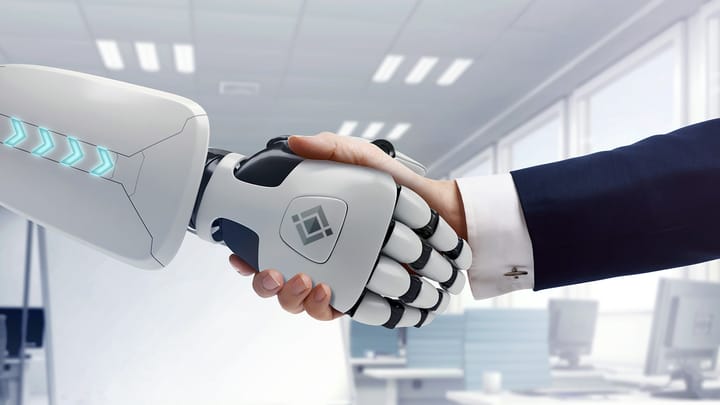Exception management at the heart of artificial intelligence performance
A process integrating artificial intelligence inevitably generates a residual error rate, which needs to be accepted as a normal operation mode. Only Human can provide a suited response to these exceptions.

Science fiction makes us dream about the promises of artificial intelligence, but it creates a mythology, which makes it difficult to understand the real issues at stake. Yet, there’s no magic ingredient in AI, but rather a lot of mathematics.
Thus, to develop an application using automated training, you need to go through two major phases:
- The first one, designed and led by scientists, consists in creating a mathematical model to solve a specific problem, using a set of algorithms which are often conventional.
- The second is an inference phase, which consists in using this model to perform the analysis on new data.
For instance, you can create a model from medical images of healthy and sick people. This model is then used to diagnose a specific disease, using pre-existing data from medical images of new patients. This model will need to evolve regularly, to take into account the new data, and thus adjust the treatment accordingly.
AI is not just about algorithms and data: it’s an industrial, as well as a basic-research challenge
AI does not provide a complete intelligence, but hyper-specialized functions. To use a medical metaphor again, it only offers brain pieces, not an entire brain.
Besides, one of AI’s challenges lies in its capacity to make the models evolve rapidly, using new data and algorithms, without damaging the diagnosis.
Therefore, the value of intelligent applications lies in the collaboration between the models: AI needs a nervous system allowing components to exchange signals, but also to involve external elements.
That’s why mathematical models represent only one part of the intelligent systems. On an industrial scale, real-time data exchange is also vital to increase fluidity between modeling and inference, and to interconnect the functions.
Real-time communication is therefore the hidden part of the iceberg. And this is also where Human and AI can collaborate to deal with unusual or very complex situations.
Exception processing, at the heart of AI
The world is not completely predictable. The chaos theory, illustrated by the Butterfly Effect, shows that minute differences in the initial conditions can cause seemingly unpredictable effects as the outcome of a complex causal chain.
This same phenomenon explains that AI models, just like weather models, will tend towards, but without ever reaching it, a 100% accuracy rate. The residual error rate they generate is inherent to their operation.
Consequently, it becomes less important to invest increasing resources to gain a few accuracy decimals, than to process errors in the best conditions.
This exception processing is at the heart of any process, from its definition to the way the organizations operate.
Exception processing at the heart of professional excellence
Operational excellence in the profession doesn’t solely lie in the capacity to address the simplest nominal cases. Companies stand out through their ability to manage, in good conditions, the situations which deviate from normal circumstances.
By placing the customer experience at the core of its vision, Amazon excels and gains new market shares, through its ability to address business contingencies: late delivery, non-compliant products, etc.
Therefore, exception processing is indeed what creates customer value, the sustainability of a brand, and the reputation of a company. In the end, the nominal process is lowly differentiating, unlike the capacity to cope with crisis situations.
Human is needed to process exception properly
Therefore, AI’s challenge remains the processing of anomalies through human-machine collaboration, which leverages their respective strengths.
In this perspective, chats and virtual assistants become natural interfaces for intelligent applications. Tomorrow, they will be at the core of human-machine collaboration, like a privileged channel allowing to notify the spotted anomalies to the managers of a system, but also to address them, by giving instructions to the machine.
A systemic approach for AI
What we call AI today is a programming technique of intelligent applications, which should be linked to a systemic logic, to have a positive impact on our society.
In this logic, AI is fallible. It relieves Human of certain repetitive tasks, but gives him stronger control and decision-making powers over exceptions. An AI company can only operate if exceptions are managed with humanity and efficiency, by imagining analysis tools, processes, and by integrating the role of AI in our education, to see beyond the algorithms.
